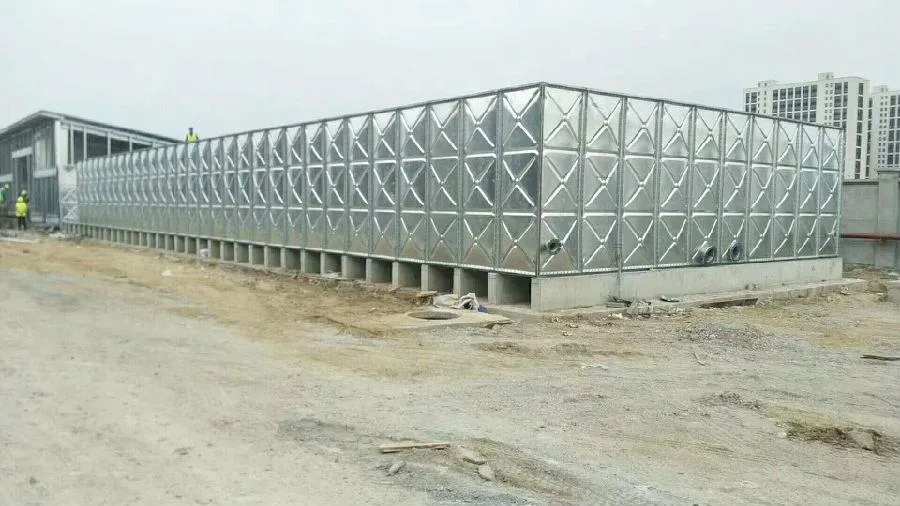loading...
- No. 9, Xingyuan South Street, Dongwaihuan Road, Zaoqiang County, Hengshui, Hebei, China
- admin@zjcomposites.com
- +86 15097380338
- Welcome to visit our website!
Cost Analysis of Solar-Powered FRP Walkways in Modern Construction
The Benefits and Pricing of FRP Walkway Solar Solutions
In recent years, the demand for sustainable energy solutions has surged, particularly in the construction of renewable energy projects. Among the innovative materials that have gained traction in this sector are Fiber Reinforced Polymer (FRP) walkways, which provide unique benefits when integrated with solar technology. This article delves into the advantages of FRP walkways as solar installations and discusses typical pricing structures associated with these solutions.
Understanding FRP Walkways
FRP is a composite material that combines a polymer matrix (such as epoxy, vinyl ester, or polyester) with a reinforced fiber, typically glass or carbon. This combination results in a material that is lightweight, strong, and resistant to environmental degradation. When used as walkways, FRP provides a durable surface that can withstand heavy loads, harsh weather conditions, and corrosive environments. These properties make FRP walkways an ideal choice for locations such as factories, power plants, and outdoor solar installations.
The Integration of Solar Technology
Integrating solar panels with FRP walkways offers an innovative solution for maximizing space and enhancing energy efficiency. By placing solar panels directly onto walkways, property owners can utilize otherwise unusable areas to generate clean energy. This synergy not only reduces land use but also provides additional shade and protection for workers and equipment below. Furthermore, the non-corrosive nature of FRP ensures that the installation remains intact over time, promoting long-term reliability in energy production.
Benefits of FRP Walkway Solar Solutions
1. Lightweight and Durable FRP materials are significantly lighter than conventional construction materials, making them easier to install and requiring less structural support. Despite their weight, they possess high tensile and compressive strength.
2. Corrosion Resistance FRP does not rust or corrode, unlike metal walkways. This property is especially advantageous in industries where exposure to chemicals and moisture is prevalent, ensuring longevity and reducing maintenance costs.
frp walkway solar price

3. Eco-Friendly As a sustainable building material, FRP is often manufactured using recycled materials. Additionally, combining FRP with solar technology contributes to a reduction in carbon footprints by harnessing renewable energy.
4. Cost-Effectiveness While the initial investment in FRP may be higher than traditional materials, the reduced maintenance costs and longevity can result in significant savings over time. The integration of solar energy also helps lower utility bills, making it a financially appealing option.
5. Versatility FRP walkways can be customized in terms of design and color to suit specific aesthetic requirements or branding needs, while still meeting functionality standards.
Pricing for FRP Walkway Solar Solutions
The pricing of FRP walkway solar solutions can vary widely based on several factors, including materials used, design complexity, space requirements, and the scale of the solar installation. Typically, the cost for FRP walkways ranges from $20 to $50 per square foot, depending on the specifications. When integrating solar panels, additional costs arise from the purchase and installation of the solar photovoltaic systems.
Solar panel installation generally adds another $2 to $5 per watt, depending on system size, efficiency, and local market conditions. Therefore, a comprehensive estimate for both the FRP walkway and the solar setup can start as low as $30,000 for smaller installations, scaling up significantly for larger projects.
It’s essential for potential buyers to conduct a thorough cost-benefit analysis and consult with both FRP manufacturers and solar energy experts to accurately assess potential savings and return on investment. Financial incentives such as tax credits, grants, and rebates for solar installations may further enhance the financial feasibility of such projects.
Conclusion
As the construction industry continues to evolve towards sustainability, FRP walkways integrated with solar energy present a promising solution. They not only enhance safety and functionality but also serve as a multi-faceted approach to harnessing renewable energy while minimizing carbon footprints. Although there are upfront costs involved, the long-term savings and environmental benefits make FRP walkway solar solutions an attractive investment for the future. As awareness and technology grow, it is likely that such solutions will become increasingly common in various industries.
-
Why Choose a Galvanized Water Tank for Your Storage NeedsNewsMay.21,2025
-
The Strength and Durability of FRP GratingNewsMay.21,2025
-
The Importance of Water Treatment Systems for Clean and Safe WaterNewsMay.21,2025
-
The Advantages of FRP Rebar for Construction ProjectsNewsMay.21,2025
-
Say Goodbye to Hard Water with a Reliable Water SoftenerNewsMay.21,2025
-
Maximize Your Water Storage with a Sectional Water TankNewsMay.21,2025
-
The Power of Filter VesselsNewsMay.19,2025
